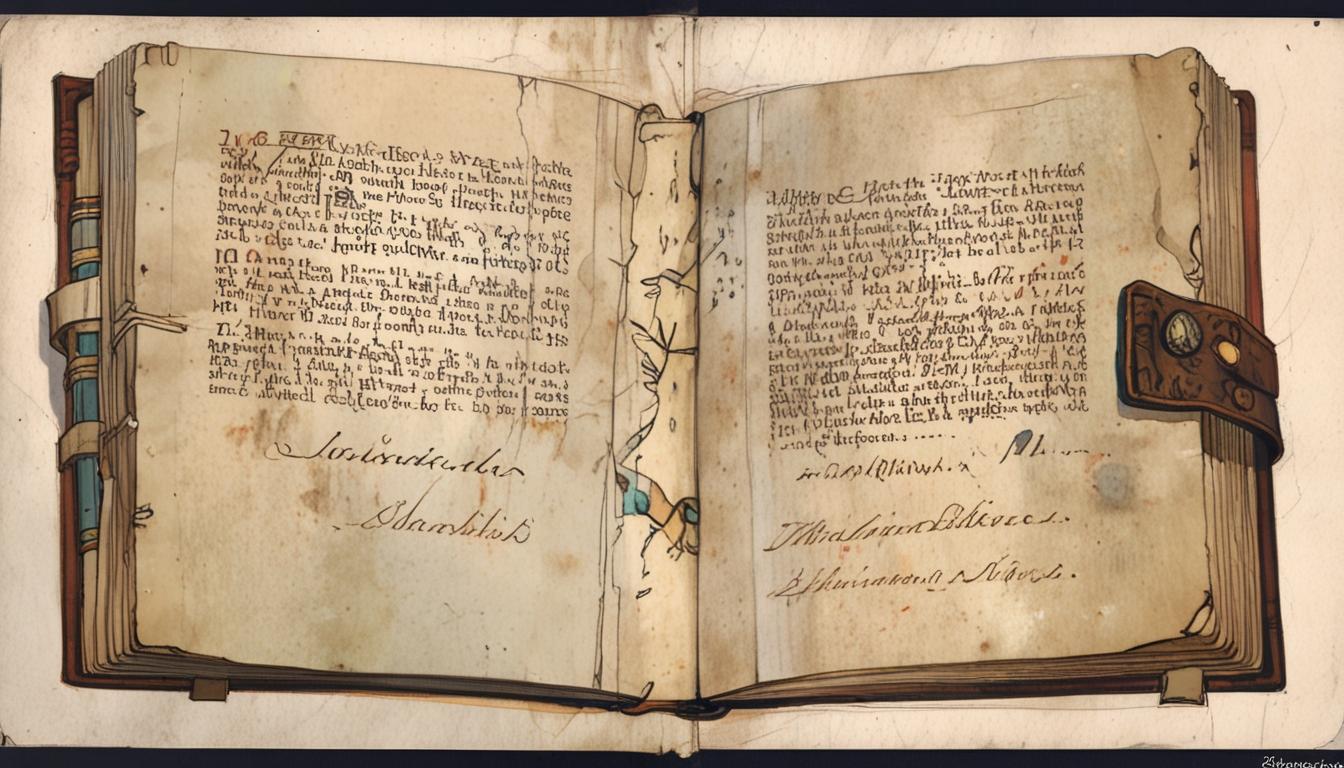On the 461st birthday of William Shakespeare, a notable development has emerged regarding the life of the renowned playwright, based on research published in the academic journal "Shakespeare" on April 23. Professor Matthew Steggle, who holds the Chair in Early Modern English Literature at the University of Bristol, has brought new attention to previously discovered scraps of a letter that may shed light on Shakespeare's personal life.
The letter fragments were originally found in 1978 by librarian F.C. Morgan within the binding of a large religious book housed at Hereford Cathedral in the United Kingdom. Intriguingly, the fragments had not been preserved for their historical value but were used as scrap paper by bookbinders to protect the binding of the nearly 1,000-page volume. The book itself was published by Richard Field, known as Shakespeare’s neighbour in Stratford-upon-Avon and also the first printer of Shakespeare’s works.
Addressed to a “Good Mrs Shakspaire,” the letter discusses an apprentice named John Butts (or Butte) and his dealings with her husband. Additionally, it references the Shakespeares residing on Trinity Lane, a street in London still existing today. This could mark the first instance where the Shakespeare family is documented as living together in London during the period in which William Shakespeare is believed to have written several of his famous plays, such as "Hamlet" and "Twelfth Night."
Traditionally, Shakespeare’s biography has maintained that he left Stratford-upon-Avon to pursue his career in the London theatre scene, while his wife, Anne Hathaway, remained in Stratford with their children, implying long periods of separation. Anne Hathaway was famously bequeathed Shakespeare’s “second best bed with the furniture” upon his death—a bequest whose meaning remains debated among scholars.
Professor Steggle explained the likely reason this discovery was not immediately pursued: “That Morgan did not do more with this discovery is understandable. He had recently celebrated his hundredth birthday, and in fact was dead by the time this note appeared in print. It was a late and startling highlight in a long career spent in English history.”
Steggle’s investigation, which forms part of his forthcoming book "William Shakespeare and the Early Modern World," has been cautious in interpreting the letter, avoiding any overstatement regarding its implications. Speaking to the Orange County Register, he described how the letter came to his attention: “I’m writing a Shakespeare biography, and found the document referenced briefly in one or two places, but nobody actually seemed to know anything about it. Then when I obtained photos of the two fragments, I thought, you could do things with this, especially with modern information technology that previous generations of scholars didn’t have access to.”
Regarding the possible significance of the letter, Steggle indicated that it challenges the conventional belief of estrangement between Shakespeare and his wife during his time in London: “There’s this prevailing narrative that the Shakespeares’ marriage was very much an arms-length affair, with the wife as a distant encumbrance while he lived an exciting life in the city – the kind of thing you see in ‘Shakespeare in Love.’ This suggests an alternative scenario in which they are living together, at least a bit, in London, with Anne involved in William’s social networks and financial affairs.”
He also expressed optimism about the potential for further discoveries: “Yes! It shows that new discoveries are still possible in 17th-century manuscript material, particularly in binding waste. In particular, as I say in the article, it makes one passionately curious about other books, printed like this one by Shakespeare’s associate Richard Field, which might still be in their original bindings.”
Additionally, Steggle commented on recent scholarly reassessments of the women connected to Shakespeare’s life, particularly Anne Hathaway. “For a long time it was assumed that they were all illiterate yokels, and maybe that’s a simplification,” he said, referencing ongoing research including that of Katherine Scheil.
Responding to queries about the scarcity of Shakespeare’s original writings, Steggle pointed out that, in fact, a “quite decent paper trail” exists. He noted that “There are dozens of, individually perhaps rather dry, documents collected on the fabulous site Shakespeare Documented: tax records, law cases, to say nothing of the numerous documents around his professional career. Those are the kinds of things that survive, by and large, whereas more personal papers almost invariably disappear. I’ve spent 20 years looking in archives for people whose lives are only known from half a dozen grubby bits of paper, and William Shakespeare is actually quite lavishly documented in comparison to many of them.”
This development offers fresh insight into the life and domestic circumstances of Shakespeare, providing historians and literary scholars with new material that may influence the understanding of the playwright’s biography and the social context of his family.
Source: Noah Wire Services
